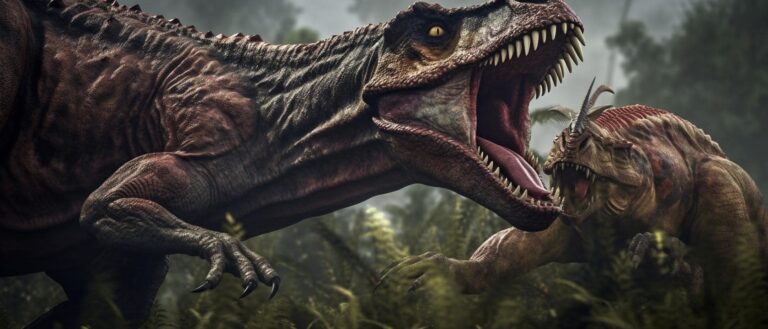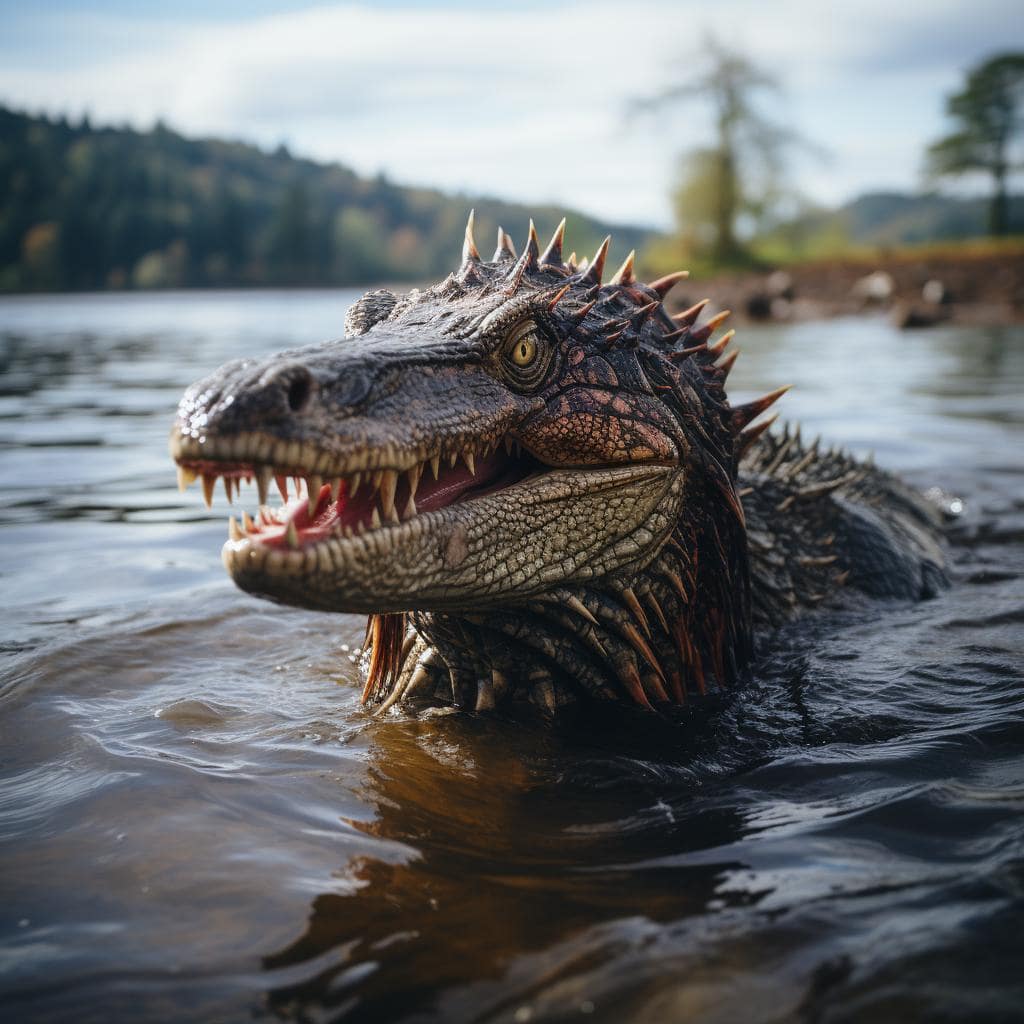
Perhaps one of the most exciting topics we read to our children is the story and existence of ancient Dinosaurs. Dinosaurs ruled and walked the Earth for millions of years until their extinction at the end of the ancient Mesozoic Era. During this era, Earth is much warmer and gave birth to newer evolved species and lifeforms, involving the gigantic Dinosaurs. It ended however in the massive meteorite impact on Earth, changing the world’s climate conditions and natural cycle, leading to the mass extinction of around 80% of life on Earth—including the Dinosaurs.
Many million years up to our modern time, dinosaur fossils are still discovered and being studied by paleontologists today. Have you ever wondered how scientists give a name to every dino species they discover? In this article, you’ll get to know how Dinosaur names are created. You will also learn some of the popular Dinosaur names both in fantasy and real life.
Before we jump into the idea of Dinosaur naming, let’s try to define first the origins and definition of the term “Dinosaur”. The usage of the word “Dinosaur” is credited to Sir Richard Owen. He coined the term “Dinosauria” from the Greek word deinos (terrible) and sauros (lizard), or simply a “terrible lizard” or “terrible reptile”. This name was specifically chosen by Sir Owen to describe the newly discovered gigantic reptilian-like fossils in 1842.
Dinosaurs are considered a huge group or category of ancient reptiles that lived on Earth during the Mesozoic Era. They are believed to emerge in the young Earth about 245 million years ago. They dominated the surface of the Earth throughout the Mesozoic Era for 180 million years but started to decline by the end of the Cretaceous Period until total extinction.
Paleontologists follow the accredited and accepted naming convention of animals detailed in the International Code of Zoological Nomenclature. As for Dinosaurs, Dinosaur names are formed by combining two Greek words that are often adjectives or nouns. Sometimes, the Dinosaur names contain Latin numbering such as “un”, “duo/bi”, “tri”, “quad”, etc. Below is the list of the most commonly used Greek words in constructing Dinosaur names.
Greek Word | Translation/Meaning |
sauros/Saurus | Lizard |
Dino/deinos | Terrible |
Cerat/ceras | Horn |
Odon/Don | Teeth |
Ptera | Wings |
Rrhynchos | Snout/Beak |
Ornis/Ornitho | Bird |
Lophus | Crest |
Mimus | Mimic |
Raptor | Robber/Thief |
Rex | King |
Velox | Fast/Swift |
Ceps | Head |
Leo | Lion |
Hippus | Horse |
Tyranno | Tyrant |
Tri | Three |
Ops | Face |
Nodo | Lumpy |
Micro | Small |
Mega | Large |
Echino | Spiked |
Bronto | Thunder |
Allo | Strange |
Apato | Deceptive |

After acquiring some of the common Greek words, scientists use them to create Dinosaur names that perfectly describe the appearance or characteristics of the Dinosaur. For example, The name Triceratops is a combination of the Greek terms tri (three) + cerat (horn) + ops (face), which in turn, translates as “Three-horned face” dinosaur. Another example is the fast-moving Velociraptor. Its name is derived from the Greek words velox (swift) + raptor (thief), or simply “a fast thief”. Velociraptors are smaller compared to other carnivorous Dinosaurs. But their quick and agile legs allow them to sneak and steal small meals from larger Dinosaurs, thus the name “fast thief”.
Dinosaurs come in all sizes and shapes. There are small Dinosaurs way back millions of years ago. Even modern-day birds such as a hen draw their ancestries from Dinosaurs. In the world of Dinosaurs, it is the family of sauropods that owns the title for the group with the largest and longest Dinosaur name to exist. Members of the sauropods are called Titanosaurs and from this set of Dinos, we compiled a list of the longest Dinosaurs to ever exist on Earth.
The Apatosaurus is now the widely accepted term for the earlier Brontosaurus Dinosaur. They lived between 156 to 151 million years ago in the late Jurassic Period. An adult Apatosaurus is said to weigh as much as 45 tons and can span about 75 feet long from its tail to their stretched neck.
The Supersaurus or the “super lizard”, is found mostly in North America and is estimated to exist during the Jurassic Period. Its fossil remains suggest that they exist between 153 to 143 million years ago. The largest discovered Supersaurus fossil has a span of around 35 meters (115 feet) from tail to head, and is likely to weigh around 44 tons.
The Patagotitan is also one of the largest sauropods discovered by scientists. Titanosaurs are often slim and longer because of their long necks and tails. However, the Patagotitan has particularly larger and bulkier thighs, neck, and body, with an average of around 78 tons in weight. Its length spans a stunning 122 feet (around 37 meters) from head to tail.
The Puertasaurus is a younger contender of the Patagotitan, existing during the Cretaceous period between 83.6 to 66 million years ago. However, its actual size and weight are often debated since only one known specimen has been discovered by paleontologists. An adult Puertasaurus has a length of around 115 feet, almost the same length as a Supersaurus, but weighs heavier at around 100 tons.
The Argentinosaurus, named after the country in which it was discovered (Argentina), is considered the longest Dinosaur discovered by paleontologists. It measures an amusing 40 meters in length (around 131 feet), exceeding the Puertasaurus, Patagotitan, and Supersaurus. In comparison, that is about the same length as the Ha’penny Bridge across the Rover Liffey. Its weight is estimated to range between 60 to 105 tons.
Known bird species today evolved from a separate carnivorous group of Dinosaurs called theropods. In contrast with the quadrupedal sauropods, the theropods are all bipedal and have small front hands. These forehands were used to grab their prey while their hind legs are used to run at speeds for chasing. All of these characteristics were similar to birds, and the discovery of the feathery Dinosaur, Deinonychus proved the link of the evolution of theropods Dinosaurs into birds.
In contrast with birds, flying Dinosaurs evolved directly from their lizard-like characteristics do exist. These Dinosaurs are called Pterosaurs (“winged lizards”). Unlike birds that came from theropods and developed wings and feathers, Pterosaurs have wing membranes similar to bats, do not have feathers, and retained their lizard characteristics. They are considered the earliest vertebrates that started to fly.
In this section, we are introducing you to the top 5 known flying Dinosaurs discovered and recorded today. Check them out below.
Also known as the Pterodactyl, the Pterodactylus is the earliest known winged Dinosaur discovered by Italian scientist Cosimo Collini in 1784. The term Pterodactylus came from the Greek word pterodaktulos which means “winged finger”, a direct description for the elongated digit found at the front edge of its wings. Unlike birds, a Pterodactylus has a powerful flight muscle that they can use to walk on all fours.
The Pteranodon is a much larger Pterosaur compared to a Pterodactylus. It is believed to exist between 90 to 100 million years ago during the Cretaceous Period. A Pteranodon has an average wingspan of 23 feet (around 7 meters) and a pelican-like beak that they use to swallow fishes or baby Dinosaurs.
The Quetzalcoatlus is named after the Aztec feathery serpent god Quetzalcoatl. It is one of the largest known Pterosaurs with an average wingspan of 12 meters (39 feet). The Quetzalcoatlus is considered the largest flying Dinosaur ever known in the entire Pterosaur family.
The Hatzegopteryx is also one of the largest recorded Pterosaurs, discovered in Transylvania, Romania. Its wingspan is estimated to be between 10 to 12 meters (33 to 39 feet), almost the same size as a Quetzalcoatlus. However, it is believed that the Hatzegopteryx might be much bigger since most of its discovered fossils are incomplete. The Hatzegopteryx has an unusually large skull compared to other Pterosaurs. However, the shape of its shoulders and wings highly suggest that this Dinosaur cannot fly, most likely because of its gigantic size.
The Dimorphodon is said to exist in the early Jurassic Period between 200 to 176 million years ago. It is one of the earliest known Pterosaurs. Unlike other flying Dinosaurs, the Dimorphodon has a smaller size, with around 3.3 feet long in height and a wingspan of only 5.5 feet. Due to its small size, paleontologists believe that Dimorphodons hunt in groups to attack larger prey. Their elongated body structure and stiffer heads also suggest that they can dive into the ocean to catch fish.
Water Dinosaurs are comprised of families of plesiosaurs (a family of sauropods under the Sauropterygia), mosasaurs (“meuse lizards”), pliosaurs (“fluffy lizards”), and ichthyosaurs (“fish lizards”). Most of them started to exist only around 250 million years during the Triassic period after the mass extinction of most life on Earth’s surface.
In this section, we compiled the Top 4 Mesozoic Water Dinosaurs that you probably didn’t know existed. Read more about them below.
The Spinosaurus is described by paleontologists as a “water-loving” dinosaur. It was discovered in the Moroccan Sahara, having a snout similar to modern crocodiles. The Spinosaurus’ remains proved that the body structure of the late Cretaceous Theropods is well-adopted for aquatic life.
The Spinosaurus is much longer and larger compared to an adult Tyrannosaurus. It is considered the largest carnivorous Dinosaur discovered today. Despite the heavy body, its bone density is enough to provide enough buoyancy to swim. Furthermore, when the scientists completed the unearthing of the whole fossil of the Spinosaurus, they became more convinced that the Spinosaurus is an aquatic Dinosaur due to its vertebrae’s articulation very similar to animals that swim.
The Shonisaurus was named after the Shoshone Mountain in Nevada where it was discovered. It is a huge water Dinosaur belonging to the Ichthyosaurus genus, with an average size of at least 15 meters (49 feet) long and a stunning estimate of 30 tons in weight. The Shonisaurus is estimated to lived during the late Triassic period. They have a long snout, long flippers, and socketed jaw tips.
The Shaustasaurus is a close relative of the Shonisaurus. It holds the record today as the largest known marine reptile and the largest known ichthyosaurus. The Shaustasaurus is almost the same size as an adult Blue Whale (100 feet) and has a characteristic very similar to a dolphin and a lizard. It has flippers, a long but slender body, elongated dolphin-like snout with no teeth. Because of the absence of teeth, scientists believe that the Shastasaurus feeds through swallowing, similar to most whales.

The Hydrorion is a member of the genus of Plesiosaur and is estimated to exist during the Jurassic period. Its Dinosaur name directly translates as “water hunter” in English, owning from its ability to swim swiftly underwater similar to sea turtles. Hydrorions can regulate their body temperature, allowing them to survive in humid or cold seas. However, they mostly dwell on shores and banks as they cannot breathe underwater.
The Loch Ness monster was attributed to the characteristic and appearance of a Hydrorion.
The Dakosaurus is probably the direct ancestor of the modern crocodiles that exist today. It belonged to the crocodylomorph genus and was estimated to exist during the Early Cretaceous Era. Similar to crocodiles, it has a large, elongated mouth containing numerous serrated teeth. The Dakosaurus is a fearsome predator in the sea. It has a very powerful bite that can easily penetrate flesh or crash bones or shells of ammonite. It has a paddle-like leg that helps it swim swiftly to chase prey or avoid larger predators.
Below is a list of our Top 8 Fantasy Dinosaur names from some of the fantastic titles in video games.
The Tigrex is not officially a Dinosaur but an actual flying wyvern in the Monster Hunter world. Despite falling into the category of wyverns, its face resembles the head of a Tyrannosaurus Rex, having a large jaw, and it has a tiger-like stripe on its head to its back and in its wings. Tigrex is one of the few huntable wyverns in the game.
The Horizon Zero Dawn is an open-world RPG that introduced to us the concept of a world overrun by machine creatures. One of the prominent machines in the game is the Thunderjaws, a brutal bipedal machine that is very similar to the characteristics of a Tyrannosaurus Rex. Similar to a T-rex, it has huge lizard-like legs, a thick heavy tail, and large jaws. It can shoot laser weapons from its mouth and some radar array from its back. Not to mention the cannons beneath its jaw and the Disc launchers below its hips.
Rex is yet another Tyrannosaurus Rex that is included on this list, introduced in the game ARK: Survival Evolved. Rex is considered the deadliest creature on the island and is the Apex among the hierarchy of dinosaurs. Often than not, players will tend to avoid random encounters with a Rex, especially during the early phases of the game. The Rex is one of the many tamable Dinosaurs that can be converted into a battle companion throughout the game.
Who would have forgotten the cute little Dinosaur character in Tekken 3? Gon, or the “Mini-Godzilla” guest character appearing only in Tekken 3. The actual species of Gon is based on the Giganotosaurus genus. Despite belonging to this family, the sprite character in-game is only a small orange Dinosaur, with a height only below the knees of any Tekken character. Gon is not the first Dinosaur creature to be introduced in the Tekken franchise. The first Dinosaur was Alex, resembling the appearance of a deinonychus—with gloves.
Tyrantrum was first introduced in the Gen VI of Pokémon, Pokémon X, and Y. It can be obtained by evolving a Tyrunt, the first stage Pokémon after reviving it from a Jaw Fossil. Tyrantrum is based on the appearance of yet another Tyrannosaurus Rex, having lizard-like legs, small forearms, thick tails, and powerful large jaws. The name “Tyrantrum” is derived from the words “Tyrant” from Tyrannosaurus and “tantrum”, the usual attitude of this Pokémon.
Aerodactyl is one of the original 150 Pokémon in Gen I. Its Pokémon name is based on the prehistoric Dinosaur, Pterodactyl, while its base design is a combination of a pterosaur head and a wyvern body. It can be obtained by reviving from an Old Amber fossil.
Similar to the Tigrex, an Anjanath is a grayish wyvern that resembles a Tyrannosaurus Rex. It is one of the very first fantasy Dinosaurs that players will encounter in the middle of the game’s prologue. Anjanath is one of the many newly introduced monsters in Monster Hunter World. It can be found roaming in the Ancient Forest and the WIldspire Waste. It has an unusual affinity with fire, making it weak against Water and Iced-based attacks.
The TIderipper is an amphibious machine that is based on the physical appearance of a plesiosaur. Tiderippers are solitary and can be found in lakes or oceans. Its mouth has a giant drill that can dig into resource deposits and filter its sediments. The side of its head has two Purgewater guns that can shoot pressurized water to defend itself.
One of the fun things to do when we talk about Dinosaur names is to create original ones. However, it might be tedious to search for available Greek or Latin terms just to create our versions of Dinosaur names. To solve this, we can simply use a Dinosaur Name Generator.
Dinosaur name generators are AI-powered tools that give users access to numerous randomly generated Dinosaur names. This tool gives much faster results and can suggest assorted lists of names that are unique and cool.
Using a Dinosaur Name Generator is a simple process that involves two easy steps.
